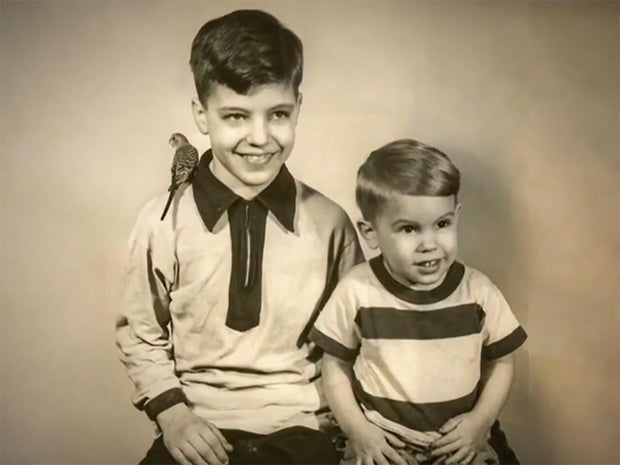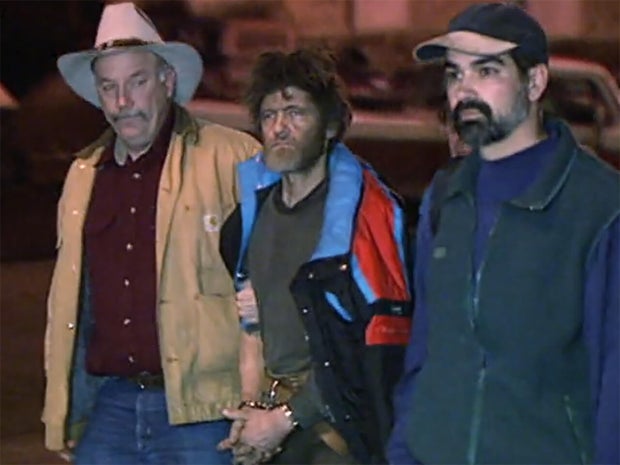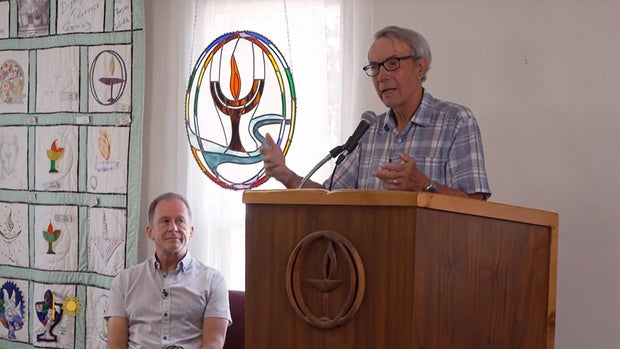
views
In the photo below, dating from the early 1950s, the little boy with the bird on his shoulder is Ted Kaczynski. His kid brother is David. One of these children would end up terrorizing the nation, yet he looks like he was a happy child. “Yeah, in some of these early photos, he’s beaming,” said David.
Ted and David Kaczynski. Family Photo 
“Now my mother always dwelled on the possibility that Ted’s problems had originated in early childhood,” David added. “When he was nine months old, he developed a kind of rash. He spent over a week in the hospital. They were only allowed to visit twice a week. My mom said that was a trauma for Ted.”
Still, he would develop into a smart kid, with an IQ of 167, and was admitted to Harvard at age 16.
David said, “At Harvard Ted was recruited for a psychological study. They were actually studying the effects of emotional trauma, but they told him it was just to talk about philosophy. He was put into these conversations with what he thought was a peer – another guinea pig in the study – but actually it was a graduate student who’d been coached to say abusive things. And he was in that study for three years.”
That might account for some of his anti-social behavior. But Ted Kaczynski would ultimately withdraw from society altogether. He moved to Montana, and built himself a little cabin. “Montana can get very cold in the winter,” said David. “He had in the middle a potbelly stove, and that’s where he would boil his water from a nearby stream. The bathroom was any place you could dig a hole outside. I kind of modeled my cabin after his, although I didn’t need the potbelly stove down in West Texas.”
Fifteen hundreds miles apart, each brother living alone in the wild. “I think we both felt a culture where you’re trying to gain material things and advance in a career was sort of inauthentic, whereas nature felt like it was more open, like a place where we could really be ourselves,” said David. “I’m using my language. Ted’s would have been much more critical of the society in which we found ourselves.”
Well, yes. What Ted Kaczynski thought, what he believed, got lost in the violence of what he did.
It was way back in 1978 that Ted began mailing small packages around the country – little bombs that were designed to explode when the packages were unwrapped, or in some cases simply picked up. Investigators called him the Unabomber because he targeted universities and high-tech businesses [Un for university, a for airline.] Three dead, 23 injured, over almost a generation.
The two brothers were in touch during that 17 years spree. “Yeah, we wrote letters to each other a lot,” said David. “In fact, the last time I saw him I spent, I think, about four or five days with Ted, and had no idea that he was doing anything violent. Had a decent time. It felt like our relationship was pretty solid.”
For the better part of 17 years, Ted Kaczynski lived in near-total isolation, all the while desperate for attention. While scattering explosives around the country, he’d been working on a 35,000-word manifesto. In 1995, he sent it to The Washington Post and The New York Times. If they didn’t publish, he threatened to strike again. He called his manifesto “Industrial Society and Its Future,” and in it he urged a “revolution” against what he called the industrial system.
Ted’s motivation for writing it, said David, was “to take revenge against society.” But there was more. Ted wrote,
“If we had never done anything violent and had submitted the present writings to a publisher, they probably would not have been accepted. In order to get our message before the public, with some chance of making a lasting impression, we’ve had to kill people.”
Management at the two newspapers had struggled with the Unabomber’s offer. It was, after all, simple blackmail. But the FBI hoped someone would see the article and recognize the author.
And, of course, someone did, albeit reluctantly. “Eventually, after a few weeks, I got to the point of saying, ‘I think it might be 50-50 that my brother wrote that manifesto,'” said David.
Through an attorney David approached the authorities, and on April 3, 1996, the longest manhunt in FBI history was finally over thanks to David Kaczynski.
The arrest of Ted Kaczynski ended the Unabomber’s reign of terror. CBS News 
When Attorney General Janet Reno personally approved seeking the death penalty against Theodore Kaczynski, David said he felt devastated: “There aren’t going to be any innocent victims now, but I’m maybe going to have to go through the rest of my life with my brother’s blood on my hands? What’s that going to be like?”
David said it was his wife who put things in perspective: “Linda turned to me and said, ‘Dave, there are other people out here suffering terribly. People who’d lost their dearest loved ones. People who will be disabled for the rest of their lives. You’re not the biggest victim in this story.'”
And so, in 1997, at Linda’s suggestion, David began contacting family members of those killed and injured by his brother’s bombs, to apologize. Most did not engage, but Gary Wright did.
Wright had been badly injured in 1987 when Ted Kaczynski left a bomb at Wright’s computer store in Salt Lake City.
Gary Wright was severely injured when one of the Unabomber’s packages exploded outside his Salt Lake City computer store in 1987. CBS News 
I asked, “Gary, it would have been reasonable if you had done what the doctor told you, and then hope that you never heard the name Kaczynski again for the rest of your life.”
“Probably so!” he replied.
“Instead, what happened?”
“Well, I had a long time to process it,” Wright said, “and I redefined for myself what forgiveness was.”
David said, “We were both on healing journeys of a sort. But we were both looking for a path forward that would be positive, and we had so much in common.”
“One family doesn’t have to suffer forever because of the act of one,” said Wright.
Over the years, the two have made numerous joint appearances, including at a Unitarian Universalist Church in the Texas Hill Country.
Gary Wright and David Kaczynski at a Unitarian Universalist Church in Texas. CBS News 
They’ve been over the same ground dozens of times: Living proof that compassion and friendship can emerge from violence and tragedy.
“Two hundred pieces of shrapnel were removed from my body,” said Wright. “About a dozen surgeries to go through to put me back together – tendon grafts, artery cuts. That was the physical part. But the mental side, that was lots of years to deal with. It took a long time.”
As for Ted Kaczynski’s manifesto, it’s doubtful that it would have received the attention it has without the campaign of violence he unleashed. [He got that part right. We’re still talking about the carnage almost 50 years later.] Asked what he made of it, Wright said, “There is some truth to it. When you have to make the choice between technology and something else, you lose some freedoms.”
Of his brother’s manifesto, David said, “His essential argument was that we think technology gives us more control over our lives, but at a certain point it becomes an illusion. In some ways, it looks kind of prophetic. I mean, as we’re looking at AI, artificial intelligence, will this sort of take away from us our ability to think through things where we replace human creativity and human thought with something inhuman?”
Ted Kaczynski died by suicide in prison in 2023. He was already dying of cancer. He never reconciled with his brother. But Gary Wright, one of his victims, has become one of David Kaczynski’s closest friends – an unlikely pair, Wright admitted. “I look around the world today and I don’t find many folks who cross the courtroom and come to some reconciliation,” he said.
It is, I suggested, “really weird.”
“Yeah,” Wright laughed. “I would agree with you. I’m not gonna tell you there’s a script for this.”
But in what is otherwise a very dark story, it does offer an unexpected glimmer of hope. “I think Gary has been one of the greatest blessings of my life,” said David. “It shows that friendship across differences and barriers is really possible. It helped to heal my belief in the possibility that human beings can live together in peace, in mutual respect, and in love.”
David Kaczynski, brother of Ted Kaczynski (the Unabomber), and one of the Unabomber’s victims, Gary Wright. CBS News 
Story produced by Dustin Stephens. Editor: Ed Givnish.
More from CBS News
https://wol.com/a-friendship-forged-from-the-unabombers-violence/























Comments
0 comment